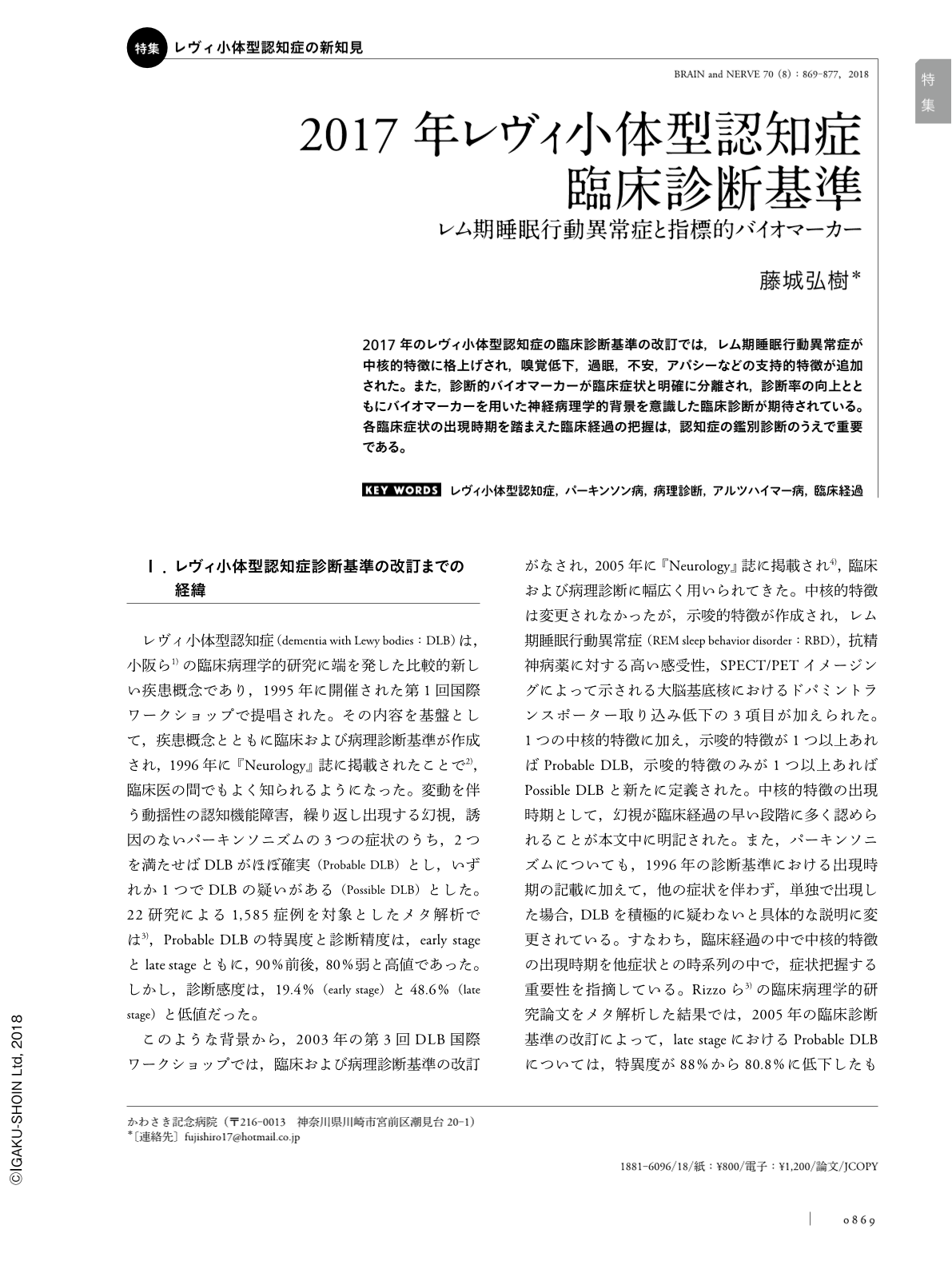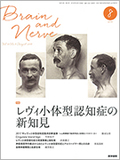Japanese
English
- 有料閲覧
- Abstract 文献概要
- 1ページ目 Look Inside
- 参考文献 Reference
2017年のレヴィ小体型認知症の臨床診断基準の改訂では,レム期睡眠行動異常症が中核的特徴に格上げされ,嗅覚低下,過眠,不安,アパシーなどの支持的特徴が追加された。また,診断的バイオマーカーが臨床症状と明確に分離され,診断率の向上とともにバイオマーカーを用いた神経病理学的背景を意識した臨床診断が期待されている。各臨床症状の出現時期を踏まえた臨床経過の把握は,認知症の鑑別診断のうえで重要である。
Abstract
Although dementia with Lewy bodies (DLB) is the second most common neurodegenerative disorder after Alzheimer disease, its diagnostic sensitivity in clinical practice is sub-optimal. In 2017, the DLB clinical diagnostic criteria were modified to include the additional core feature of REM sleep behavior disorder (RBD) and three new indicative biomarkers. With this revision, clinically probable DLB is represented by two or more core features (fluctuations, parkinsonism, visual hallucinations, or RBD) or by one core feature plus one indicative biomarker (low striatal dopamine transporter uptake, reduced cardiac [123I]-metaiodobenzylguanidine uptake, or REM sleep without atonia on polysomnography). Because RBD is an early feature of DLB and often precedes the onset of other core features, a clinical history of RBD enables us to improve the low diagnostic sensitivity of DLB at the early stage of disease progression. Moreover, RBD is an accurate predictor of DLB in terms of the differential diagnosis of dementia based on clinicopathological findings. Increasing the detection rate of RBD with confirmation by indicative biomarkers provides greater diagnostic accuracy of DLB, even in the absence of other core features. This review focuses on the revised DLB clinical diagnostic criteria for identifying patients with probable DLB in clinical practice.

Copyright © 2018, Igaku-Shoin Ltd. All rights reserved.


